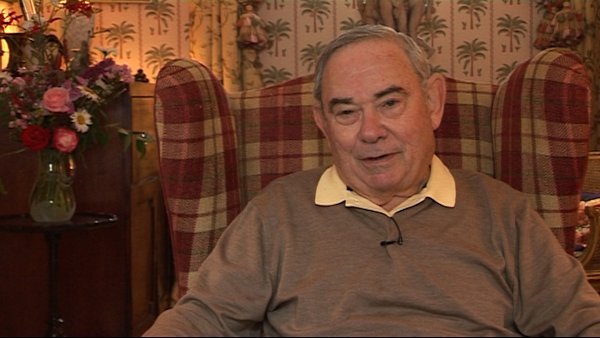NEXT STORY

The global distribution of WI-38
RELATED STORIES

NEXT STORY

The global distribution of WI-38
RELATED STORIES


|
Views | Duration | |
|---|---|---|---|
| 121. Frank Perkins | 57 | 02:37 | |
| 122. Human adult cell replication lower than fetal cell replication | 68 | 01:52 | |
| 123. Nathan Shock | 63 | 02:16 | |
| 124. Replacing WI-25 with WI-26 | 67 | 02:48 | |
| 125. Searching for healthy female fetal tissue | 183 | 04:29 | |
| 126. Laying down the first standards for vaccine production | 65 | 05:31 | |
| 127. The global distribution of WI-38 | 224 | 00:56 | |
| 128. The Hayflick limit | 2 | 221 | 02:06 |
| 129. Drago Ikić promotes the use of human cell culture | 73 | 02:11 | |
| 130. Worldwide production of vaccines using the WI-38 cell strain | 136 | 01:40 |


Now, returning to the laboratory in 1961, before WI-38 was produced, at the time when WI-26 was still being used, we decided to make a polio vaccine using Hilary's... Hilary Koprowski's attenuated polio strains. And one of my associates at the Wistar Institute, who was... we were rather close friends for many years, was a man by the name of Stanley Plotkin. He was a physician who did not practice medicine as such, but was indeed a virologist, an excellent virologist. Stanley and I became friendly, and he at this time was looking... became interested in the question, as I did, of producing a polio vaccine on our cells in order to prove that they were both safe... that the vaccine produced in them was both safe and efficacious.
So, we undertook that study and I produced many huge bottles of cells of WI-26, inoculated them with Hilary's, I think, one strain – I don't recall now exactly the strain; there are three polio types – and produced the vaccine. Because of Stanley's title as a paediatrician, he had contacts at hospitals in the Philadelphia area and arranged for the vaccination of several children with this vaccine. And, again, this touches on the question of ethics. I also decided to vaccinate my then, I believe, four children with that vaccine as evidence of my confidence in its safety and efficacy. It was an oral vaccine and... containing an attenuated polio virus.
We were completely successful. The vaccinees were protected and we wrote a paper describing this. I was the senior author; the other authors were Plotkin, a man by the name of Norton, who was an associate of Hilary's, and Hilary. The paper was published in the Journal of Public Health, I believe, in 1961 or '62, and that set the standards for subsequent vaccine production and alerted the vaccine community worldwide to the use of these cells.
As a result of that, there... and my relationship with Frank, it became so important that the World Health Organisation began to recognise that this had worldwide implications. And they set a meeting... set up a meeting in Geneva to which I was invited along with Frank. It was organised by the then director of virology at WHO, a man by the name of Cockburn, C-O-C-K-B-U-R-N.
And this committee did a... has as its assignment was a very important thing. Its assignment was over the next three days of this meeting to write standards for the use of these normal human cells in the production of vaccines; that is, how to identify the cells, how to be sure they're free of viruses, how to be sure that they are not... do not produce tumours in animals, and all of the technical niceties that are required to be sure that you have a safe cell population for the preparation of vaccines to be introduced into humans.
And we did indeed achieve that goal. They were published within the WHO and were made available to other countries where people were now becoming interested in producing vaccines and WI-26, and by this time, WI-38, which I initiated in 1962. So that meeting was significant in that respect; it laid the first standards for vaccine production in a continuously proper or so cell population. Which was historically important; we had now moved from the... what was thought to be the only acceptable cells, namely primary cells as described in the NIH report that I mentioned earlier in which a select few people at the NIH felt that they were the only ones qualified to lay down regulations, which was very annoying.
Leonard Hayflick (b. 1928), the recipient of several research prizes and awards, including the 1991 Sandoz Prize for Gerontological Research, is known for his research in cell biology, virus vaccine development, and mycoplasmology. He also has studied the ageing process for more than thirty years. Hayflick is known for discovering that human cells divide for a limited number of times in vitro (refuting the contention by Alexis Carrel that normal body cells are immortal), which is known as the Hayflick limit, as well as developing the first normal human diploid cell strains for studies on human ageing and for research use throughout the world. He also made the first oral polio vaccine produced in a continuously propogated cell strain - work which contributed to significant virus vaccine development.
Title: Laying down the first standards for vaccine production
Listeners: Christopher Sykes
Christopher Sykes is a London-based television producer and director who has made a number of documentary films for BBC TV, Channel 4 and PBS.
Tags: World Health Organization, Nation Institute of Health, Hilary Koprowski, Stanley Plotkin
Duration: 5 minutes, 31 seconds
Date story recorded: July 2011
Date story went live: 08 August 2012